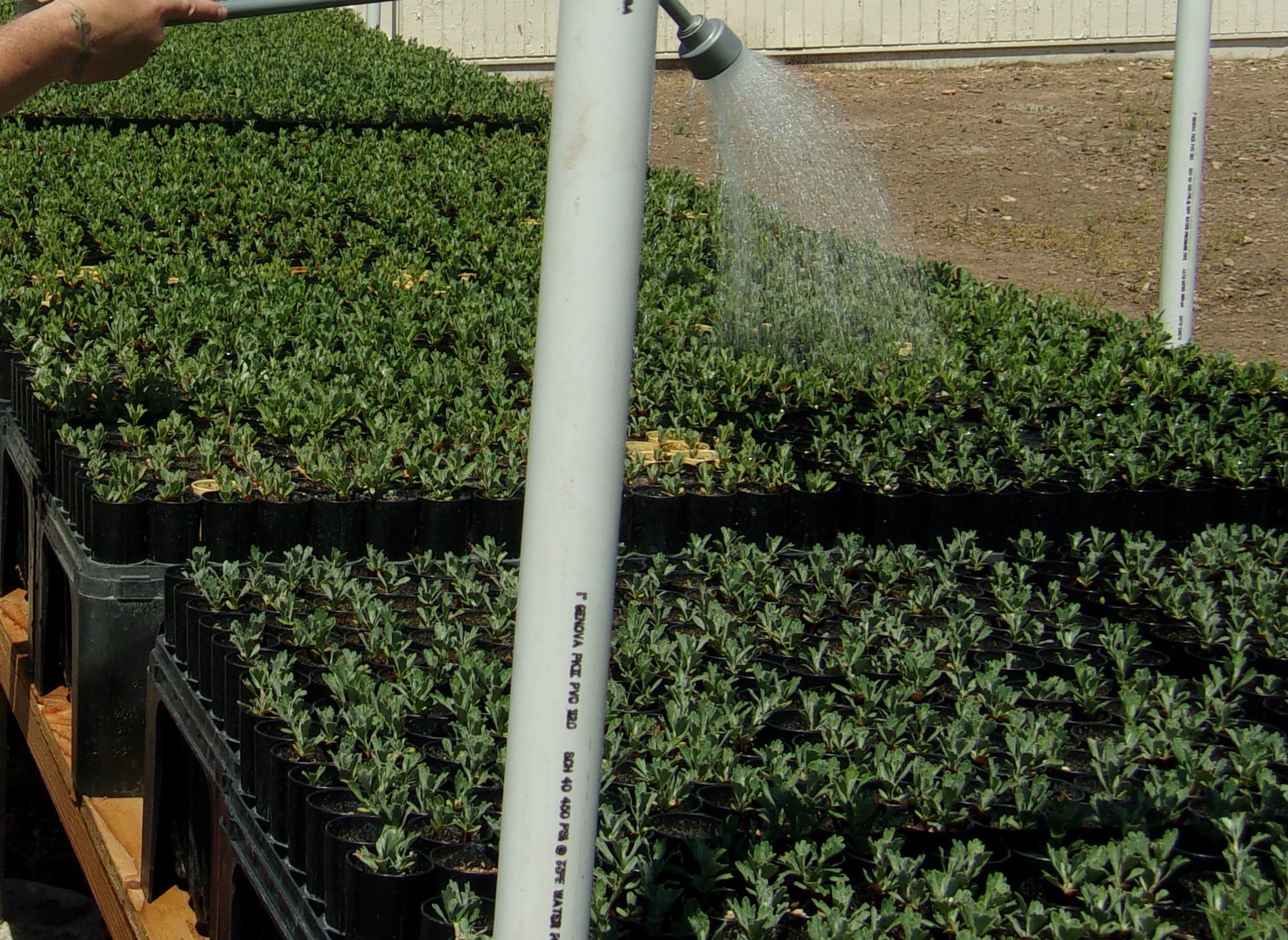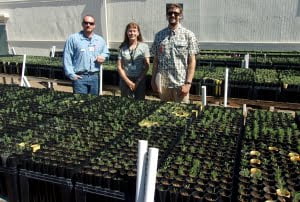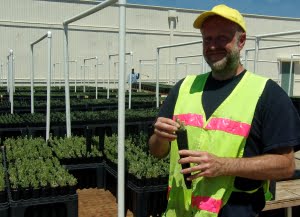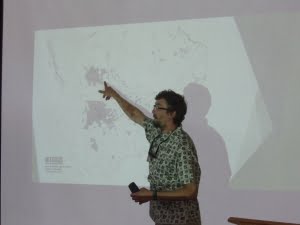
Sagebrush in Prisons Project: Restoring habitat and hope
Institute for Applied Ecology (IAE)’s Sagebrush in Prisons project has inmates caring for seedlings and discovering ecology at 11 prisons in 6 western states, including the Warner Creek Correctional Facility in Lakeview, Oregon with support from the Bureau of Land Management’s Plant Conservation Program. This spring at Warner Creek, inmates are busily caring for 30,000 sagebrush and bitterbrush seedlings. After watering, fertilizing, and thinning the seedlings through this summer, they plan to deliver 10,000 plants for habitat restoration in the Lakeview district, and 15,000 more seedlings to Alturas BLM sites for a fall restoration planting. The plants will provide habitat for greater sage-grouse, an icon of the American West, which has been threatened in recent decades due to declining habitat. These projects may also benefit some 350 wildlife and bird species that have declined due to invasive species encroachment, development, or wildfire.
Restoration is defined by the Merriam-Webster dictionary as “the act or process of returning something to its original condition by repairing it, cleaning it, etc., bringing back something that existed before, or returning something that was stolen or taken.” IAE’s Sagebrush in Prisons project work does this by making plants available for restoring habitats; providing inmates a chance to give back to their communities, learn new skills, and find inner peace through caring for living things; and offering scientists and conservation practitioners a way to reach underserved audiences with exciting exchanges of ideas.
One inmate wrote eloquently about his involvement in the project: “The sagebrush program has been very good for my soul. This project has done more than rescue the sage grouse, it’s allowed us men to do and be something positive. Through this project, men’s lives begin to have worth; we see that we can be positive and benefit the world instead of bringing it down. Someone smiling, and saying well done can move a man’s heart and give him back hope.”
Inmates at Warner Creek Correctional Facility also receive sustainability lectures from educators who come to the facility each month to discuss topics such as green energy, fisheries, wildlife diseases, or other aspects of science or ecology. This educator-prisoner interaction provides scientists with an underserved audience for their work, and prisoners with information they may not have had any access to in their lives.
“Outreach can be so rewarding,” said Joe Porter, wildlife biologist with the Lakeview BLM. “It really makes my job that much better!” Mr. Porter recently spoke to inmates about education efforts surrounding amphibian diseases and how people can help stop the spread of wildlife diseases. The lecture was very well received, and the inmates commented on the enthusiastic delivery from Mr. Porter.
Clearly, a glimpse into what it takes to restore the natural world has impacts on inmates. “Yes, I’ve made mistakes, we all have, but the one I don’t want to make is missing the chance to give back to the world that has taken care of me,” an inmate reflected. “Given the chance you will see the goodness in us all.”
Support for the Sagebrush in Prisons project is provided by Bureau of Land Management in collaboration with the Institute for Applied Ecology, Oregon Department of Corrections, local BLM field offices, and the Sustainability in Prisons Project Network at Evergreen State College.




Restoration
Research
Education
Get Involved
Contact
Main Office:
4950 SW Hout Street
Corvallis, OR 97333-9598
541-753-3099
[email protected]
Southwest Office:
1202 Parkway Dr. Suite B
Santa Fe, NM 87507
(505) 490-4910
[email protected]
© 2024 Institute for Applied Ecology | Privacy Policy